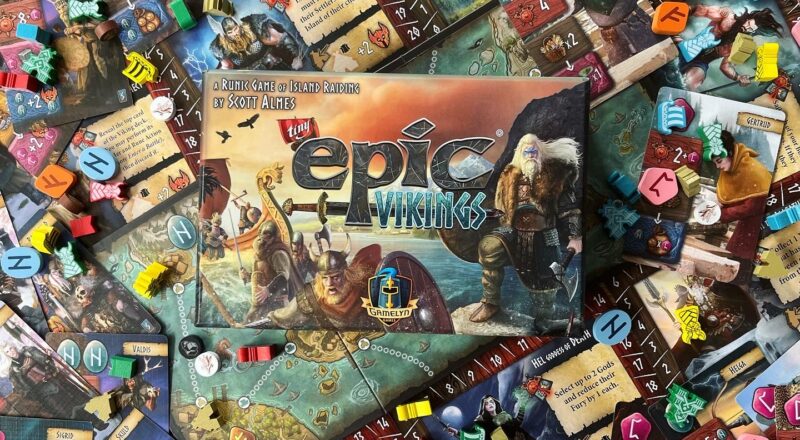Are you a real Ragnar Lothbrok or Vicke Viking? Are you not afraid of Ragnarök? Get in your longboat and set sail to discover and plunder new worlds in Tiny Epic Vikings!
Background
Regular readers of Dice Daniel know that we are not only fans of Nordic myths and Vikings, but also of Tiny Epic games. In the past, we already published a series of articles on vikings and Nordic mythology in (board) games and also published reviews of Tiny Epic Dinosaurs, Tiny Epic Mechs, Tiny Epic Galaxies and Tiny Epic Defenders. The Tiny Epic games are big games in a small package.
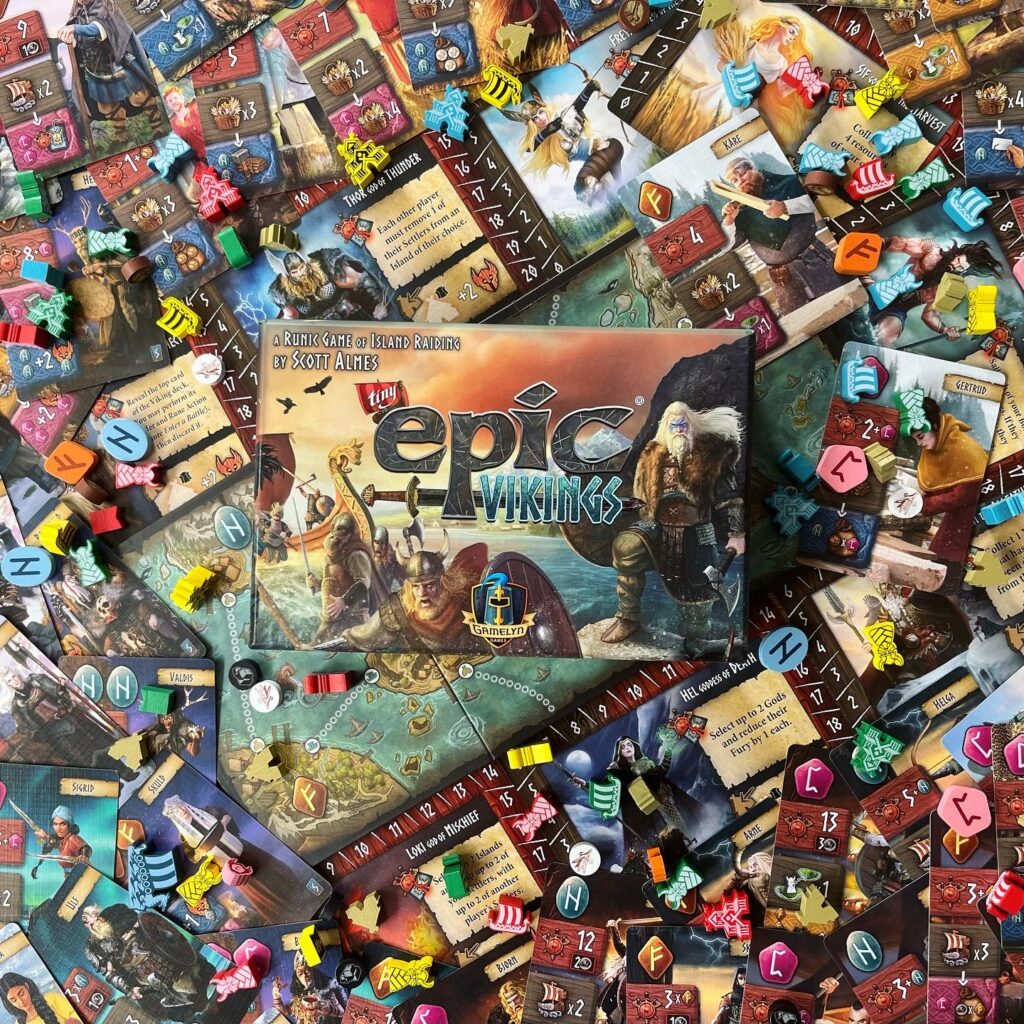
All Tiny Epic games promise a greatest gaming experience, a manageable complexity and fantastic production quality. The only difference with games in immense boxes is that the game fits rather easily in your bag, but for a small(er) price and less cabinet space, you often get a lot in return. All Tiny Epic games are designed by Scott Alms and produced and published by Gamelyn Games. There are Tiny Epic games with a variety of themes (think pirates, zombies and soon even the criminal underworld) and different types of game genres and mechanics. Now it’s time for Tiny Epic Vikings!
Game setup and goal
Open the tiny box and the parts literally and figuratively come flying. Place the board face up in the centre of the table and place the corresponding rune on each island and place villages in the indicated places. Randomly place two rows of favour cards for the gods along the game board and three random gods with a random rage marker corresponding to a colour of rune. The amount of favour cards depends on the amount of players. There are many different gods in Nordic mythology and Tiny Epic Vikings also houses plenty for enough variety. Lastly, players place a card next to the game board to keep track of the era. This card contains information that players can consult during the game.
Each player gets game pieces in their colour. Each player gets a tableau (large map), settlers, long boats and two typical Scandinavian stave churches. They place the components in the indicated places on their tableau and players also place one of their boats on the board. After players set up the game, they are ready to plunder and earn favours from the gods.
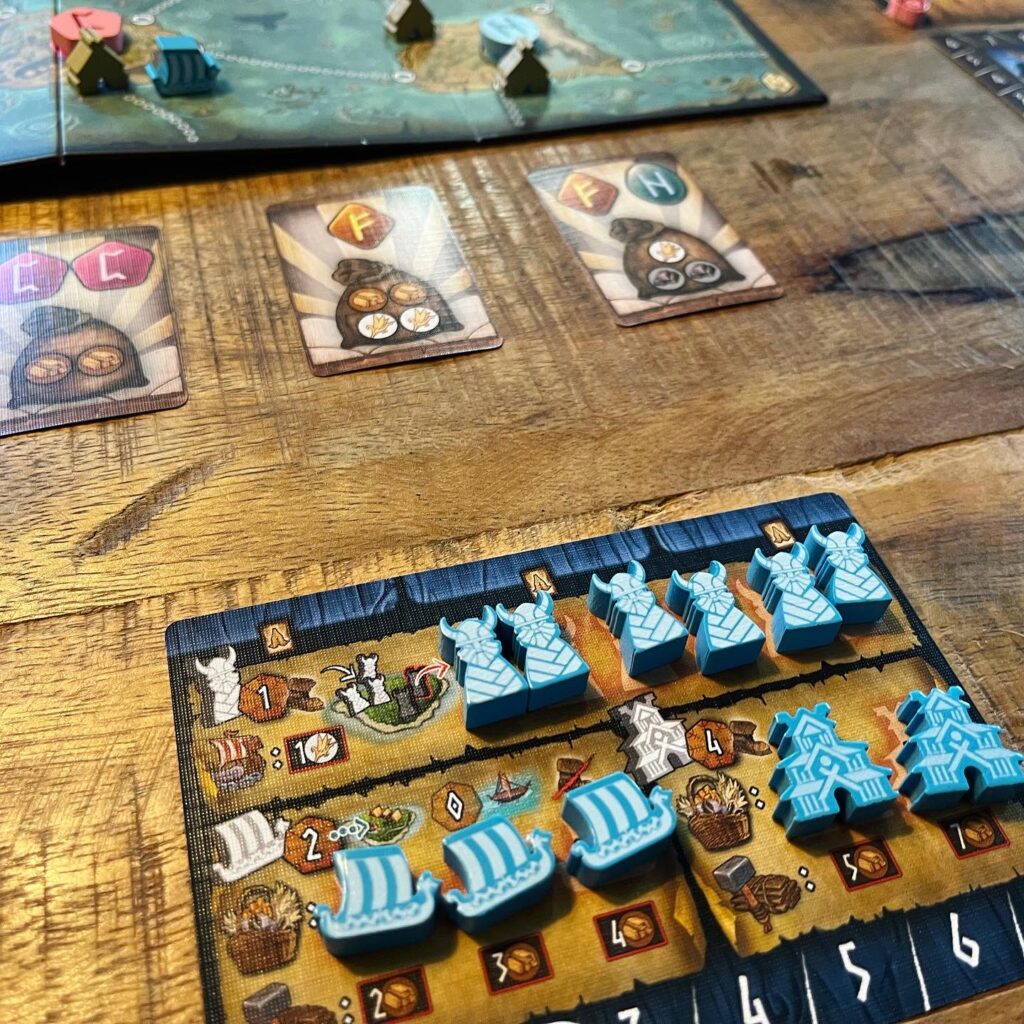

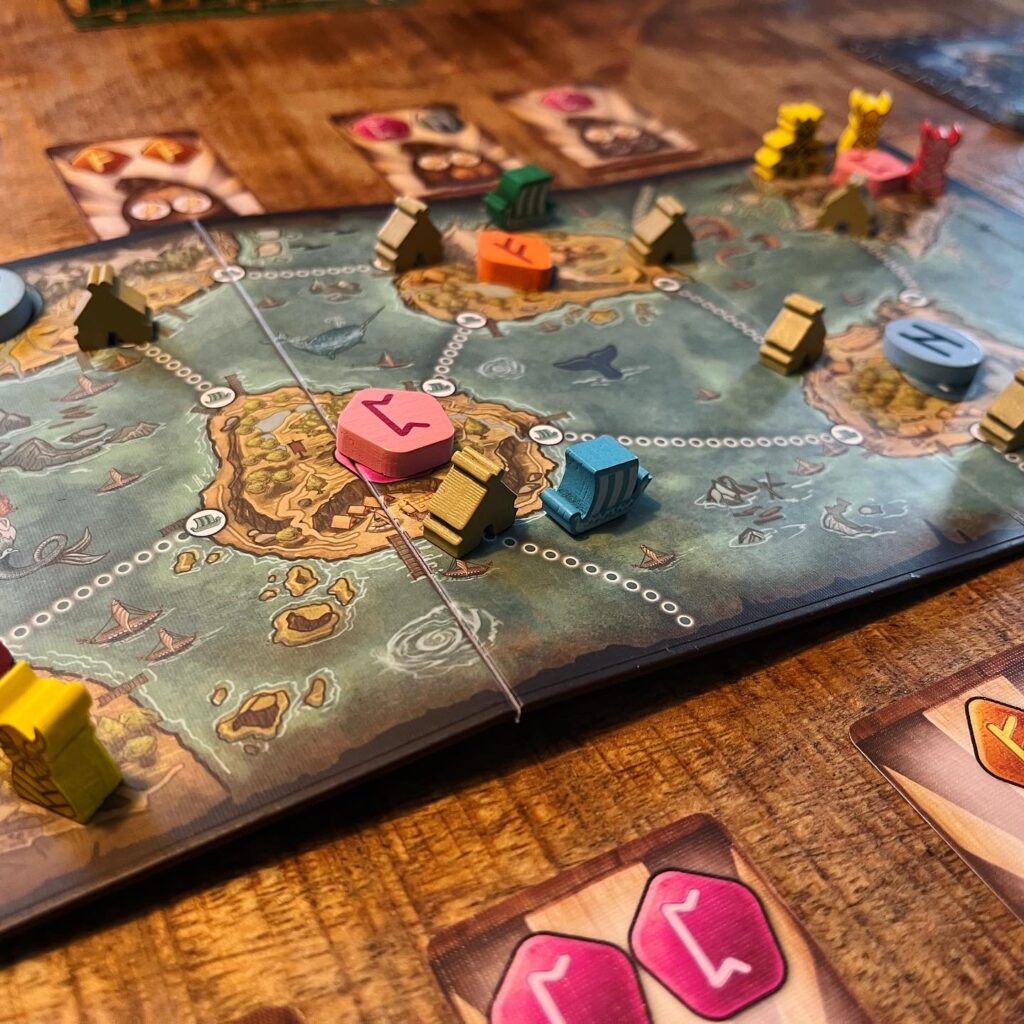
During the game, they can collect runes by conquering islands, earn favour cards by going to war and amplify the anger of the gods. The most evil god deals out the most points and each god has a corresponding rune. At the end of the game, count your collected runes (from conquered islands and favour cards) to calculate your score. The player with the most points wins!
Gameplay
Tiny Epic Vikings combines the mechanics card drafting, action planning, bluffing and area control. The game is played during three eras and during each era, players receive a hand of leader cards. The amount of cards varies per era. Players first divide these cards: they choose a card each time and then pass on remainder until all cards are divided. After the cards have been dealt, players take turns taking actions with their cards.
The leader cards each depict a rune, a combat value, a leader action and a rune action. The symbolism of these cards is clear. Numbers depict strength (for the combat of the action) and what the cost is to use a card. All cards played during a round remain in front of a player to show how many cards have been played, but also to show which active runes a player has already acquired. The player who loses a battle can also count on the bonus action of a god. I you die during battle then you will reach Valhalla!
Cards can be played face-down to start a battle. Players compete for favour cards and when a fight is started, players can also play a closed card to fight with during their turn. Once it is the first fighter’s turn again, alls cards are revealed and the player with the strongest card wins the fight and the favour card. This favour is placed face down above the winning game’s tableau and each player can possess up to three favours at the same time.
Leader cards can also be played face-up for the leader action and, as a bonus, players can then also use the rune action if they have enough active runes (other cards and runes from conquered islands) in front of them. With actions, players can move their boats and colonists, build new boats and also stave churches and collect resources. By moving boats and settlers and establishing stave churches, players can exert influence over the islands and also chase away other settlers. If you have the most influence over an island, you earn the corresponding runes.


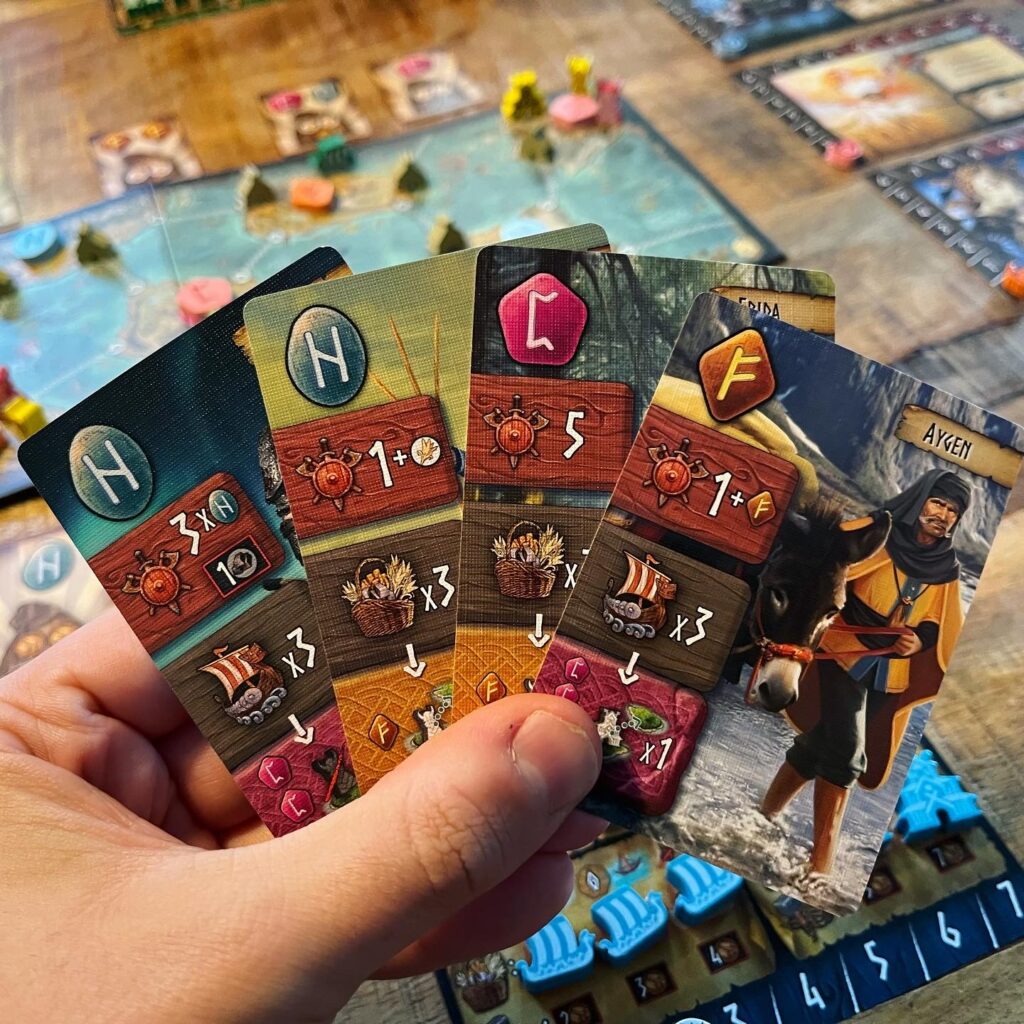
Each time a player loses a battle or an island is conquered, a god becomes more enraged. In this way, players can try to influence the scores and outcome of the game. If a player moves a boat to a village, that player can loot. Looted villages can be sacrificed for bonus actions or to increase the anger of the gods.
Verdict
Tiny Epic Vikings cleverly combines different game elements into an interesting and dynamic game. The game is at its best with three or four players, because of the high level of interaction. With more players, the whole board fills up with boats, settlers and churches, creating plenty of friction and conflict. Battles with the cards also have very dynamic outcomes with more players.
A highlight of Tiny Epic Vikings is the interesting system where cards can be used for different actions, with the runes on the used cards themselves unlocking possible new bonus actions. So you play a card not only for an action, but also as a possible means of payment. Because there are all kinds of different cards, you have to collect cards smartly at the beginning of a round and plan well to perform the desired actions, but also have enough leeway to react to other players’ actions.
Another fun element is the implementation of bluffing. Players collect favours that end up being hidden from other players. Players try to raise the ire of gods to score as many points as possible themselves, but obviously do not want to help other players in doing so, but rather thwart them. A game for real vikings! Skål!

